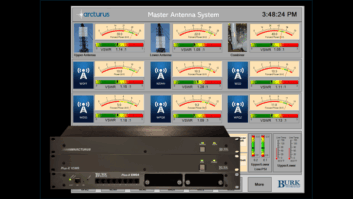LONDON — Thomas Neubauer, VP Business Development from network planning and optimization firmTEOCO recently published a short opinion piece on Telecoms.com that should be of interest to everyone who works in terrestrial broadcasting.
The entire article can be found here. Let me parse it out for the sake of brevity. The emphasis added is mine.

Global momentum is building for LTE broadcast (eMBMS) technology. The principle of using cellular networks for hosting live video content streams isn’t new. The mobile industry embraced the idea of mobile broadcasting services back in 2004 when DVB-h technology was formally adopted as an ETSI standard. Four years later in 2008, the European Union officially endorsed DVB-h as the preferred technology for terrestrial mobile broadcasting. At the same time, an alternative technology was also making its debut. MediaFLO by Qualcomm was adopted by both AT&T and Verizon in 2007 as the mobile broadcast technology of choice. However the format was dead three years later.
I know that many of us have seen “dead” MediaFlo transmitters (and antennas) seemingly abandoned at transmitter sites. The sites were generally very well done and it’s a shame so many were left like that. In any case I digress.
Why did DVB-h and MediaFLO fail? Both MediaFLO and DVB-h were beset by commercial and technical challenges. Perhaps the most significant was that both technologies requiredentirely separate infrastructure to support them.
When DVB-h and MediaFLO were launched they weren’t compatible with supporting 3G networks — DVB-h and MediaFLO were OFDM-based whereas 3G was W-CDMA and CDMA, respectively.
Another key issue when DVB-h and MediaFLO launched, was the scarcity of available devices that were equipped with an appropriate receiver. During this time, the iPhone was still in its 2G iteration — the mobile data revolution was about to take off but wasn’t sufficiently established to support mobile broadcast services. Those users that could have used DVB-h or MediaFLO therefore, would have suffered a poor watching experience in limited bursts (usually just 5-10 minutes of footage a day)…The issues weren’t purely limited to user experience either. DVB-h and MediaFLO also used spectrum that fell outside of that used for mobile networks — this made them costly to support and deliver.
Alas, another technology that failed because it was too far ahead of its time.
The arrival of LTE provided sufficient bandwidth, device variety and spectral efficiency to finish what DVB-h started. LTE Broadcast technology, or eMBMS, has overcome the same challenges as DVB-h and is at the forefront of some of the world’s largest operators’ commercial agendas.
Critically, both eMBMS and LTE are based on OFDMA infrastructure, which in turn enables key economies of scale. Today, eMBMS is considered the single global standard for video broadcast on mobile networks. Supporting devices have at least four different processing cores, with vast power and display technology capable of running HD videos. The number of operators currently backing LTE broadcast also suggests that finding compelling business models won’t pose a problem either.
The latest operator to openly discuss its plans for LTE Broadcast technology was AT&T, just a week or so ago. (This article is from January of 2016.) It revealed its intentions to use it as a mass content delivery service. As with previous trials and demos from EE and Verizon, AT&T suggested that mass sporting or other live events provide the ideal use case for LTE Broadcast.
So is LTE broadcast’ success guaranteed?
As with any innovative mobile data service, success will depend on the successful delivery of a positive user experience. LTE broadcast is very dependent on the performance of the radio network. There must be plenty of capacity available in the LTE unicast network which needs careful planning. How many sites will need to be involved? What changes need to be made to existing infrastructure? What additional sites might be needed? How can operators jointly optimize LTE network technology with the LTE broadcast layer?
In order to transmit a number of HD video channels, services must “eat” from the underlying LTE network capacity. Inevitably this requires careful compromise and predictions to ensure both systems work harmoniously together. Ensuring this happens requires a number of technical considerations are met linked to available signal quality and deploying different modulation and coding schemes.
As with DVB-h, there are so many variables to successfully combine in ensuring LTE Broadcast succeeds. As with any new service or application, it will live and die based on the quality of the supporting network. Unlike DVB-h however, LTE Broadcast has all the necessary ingredients to go mainstream.
At first blush this seems more of a danger to terrestrial television transmission, but clearly the same technology could be used to transmit “radio” as well, especially in a SFN system. I keep wondering when the Engineers at these MNOs will do a palm-to-forehead followed by “Hey — isn’t there already some sort of one-to-many broadcast infrastructure out there in the World? Why reinvent the wheel?” Let’s just use them!







